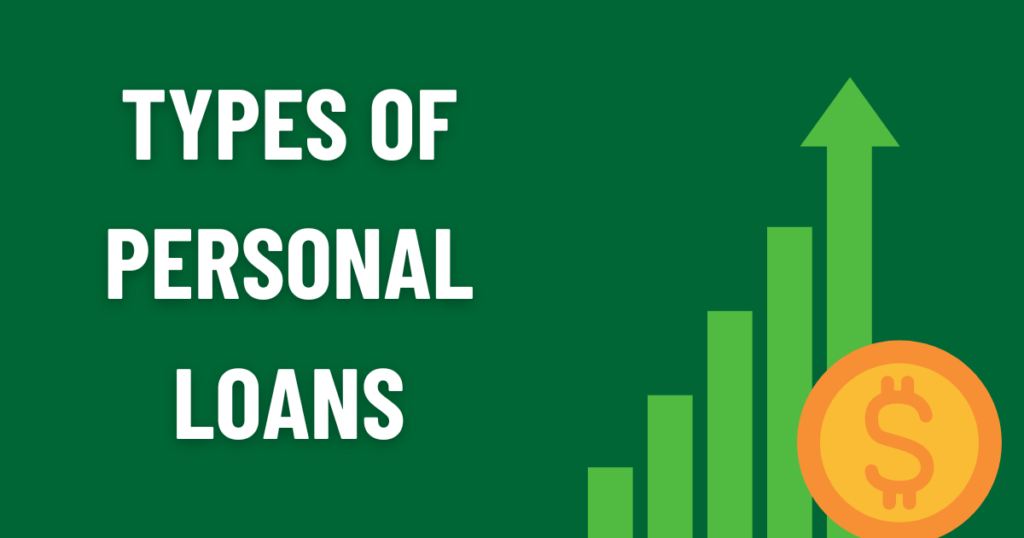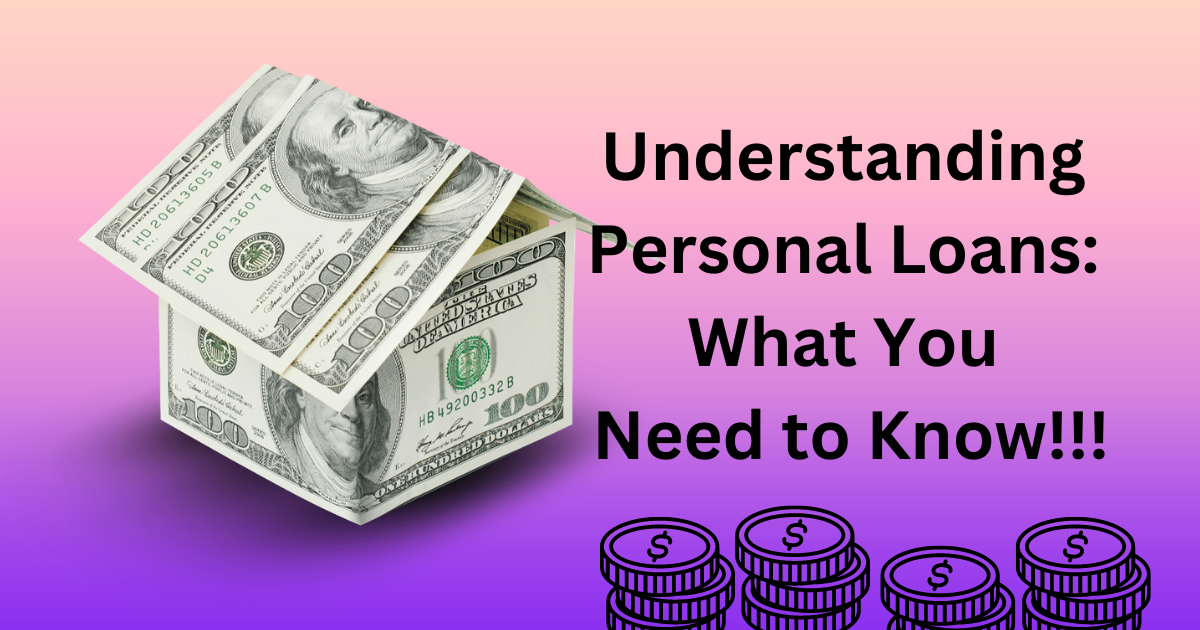Personal loans are a versatile financial tool that can help you manage a wide range of expenses, from consolidating debt to covering unexpected costs or making large purchases. Unlike other types of loans that are earmarked for specific purposes, personal loans offer flexibility in how you use the funds. However, with this flexibility comes the need for careful consideration and understanding to ensure that a personal loan is the right financial decision for you.
This comprehensive guide will walk you through everything you need to know about personal loans, including how they work, the types available, their benefits and drawbacks, and tips for applying and managing them effectively.
What is a Personal Loan?
A personal loan is a type of unsecured loan offered by banks, credit unions, and online lenders. “Unsecured” means that the loan does not require collateral, such as your house or car, which differentiates it from secured loans like mortgages or auto loans. Because personal loans are unsecured, lenders typically rely on your creditworthiness, income, and other financial factors to determine whether to approve your application and at what interest rate.
Personal loans are generally repaid in fixed monthly installments over a set period, usually ranging from one to seven years. The loan amount can vary widely, from as little as $1,000 to $100,000 or more, depending on the lender and your credit profile.
Types of Personal Loans

- Fixed-Rate Personal Loans:
- Overview: These are the most common type of personal loans. The interest rate remains constant throughout the life of the loan, meaning your monthly payments stay the same.
- Pros: Predictable payments make budgeting easier.
- Cons: If interest rates fall, you won’t benefit from a lower rate unless you refinance.
- Variable-Rate Personal Loans:
- Overview: The interest rate on these loans can fluctuate based on changes in a benchmark rate, like the prime rate.
- Pros: Initial rates may be lower than fixed rates, potentially saving you money if rates remain stable or decrease.
- Cons: Payments can increase if interest rates rise, making budgeting more challenging.
- Debt Consolidation Loans:
- Overview: A debt consolidation loan is used specifically to combine multiple high-interest debts into a single loan with a lower interest rate. This is particularly common with credit card debt.
- Pros: Simplifies debt repayment and can lower overall interest costs.
- Cons: If you continue to accumulate new debt, it can worsen your financial situation.
- Co-Signed Loans:
- Overview: If your credit isn’t strong enough to qualify for a loan on your own, you might consider a co-signed loan, where a co-signer agrees to take on the responsibility if you default.
- Pros: Can help you qualify for a loan and potentially secure a better interest rate.
- Cons: The co-signer is equally responsible for the debt, which can strain personal relationships.
- Secured Personal Loans:
- Overview: Although less common, some lenders offer personal loans that require collateral, such as a savings account or certificate of deposit.
- Pros: Lower interest rates due to reduced risk for the lender.
- Cons: Risk of losing your collateral if you can’t repay the loan.
- Unsecured Personal Loans:
- Overview: The majority of personal loans fall into this category, with no collateral required.
- Pros: No risk of losing personal assets.
- Cons: Higher interest rates due to increased risk for lenders.
How Personal Loans Work
- Application Process:
- The process typically starts with an application, either online or in person, where you’ll provide personal and financial information, including income, employment status, and existing debts.
- The lender will conduct a credit check to assess your creditworthiness. A higher credit score generally leads to better loan terms.
- You may need to provide documentation such as pay stubs, tax returns, or proof of identity.
- Loan Approval and Terms:
- If approved, the lender will offer you loan terms, including the interest rate, loan amount, and repayment period.
- It’s essential to review these terms carefully, ensuring you understand the total cost of the loan, including interest and any fees.
- Receiving Funds:
- Once you accept the loan terms, the lender will disburse the funds, usually directly into your bank account.
- In some cases, the lender may pay creditors directly, especially with debt consolidation loans.
- Repayment:
- You’ll start making monthly payments according to the loan agreement. These payments typically cover both principal and interest.
- It’s important to make payments on time to avoid late fees and potential damage to your credit score.
Pros and Cons of Personal Loans
Pros:
- Flexibility: Personal loans can be used for almost any purpose, from home improvements to medical expenses.
- No Collateral Required: Most personal loans are unsecured, meaning you don’t risk losing assets like your home or car.
- Fixed Payments: With fixed-rate loans, your payments remain the same throughout the loan term, making it easier to budget.
- Lower Interest Rates: Personal loans often have lower interest rates compared to credit cards, especially if you have good credit.
- Debt Consolidation: A personal loan can be a useful tool for consolidating high-interest debts into a single, more manageable payment.
Cons:
- Potentially High Interest Rates: If your credit isn’t strong, you might be offered a high interest rate, increasing the cost of the loan.
- Fees and Penalties: Some personal loans come with origination fees, prepayment penalties, or other costs that can add up.
- Debt Cycle Risk: Using a personal loan irresponsibly, such as to pay off existing debt without addressing the root cause, can lead to a cycle of debt.
- Impact on Credit Score: Applying for a personal loan can temporarily lower your credit score due to the hard inquiry. Missing payments can also damage your credit.
- Fixed Repayment Schedule: While fixed payments are predictable, they can also be inflexible. If your financial situation changes, you may struggle to keep up with payments.
Factors to Consider Before Taking Out a Personal Loan
- Purpose of the Loan:
- Carefully consider why you need the loan. Is it for an essential expense, or could it be avoided or delayed? Only take out a loan if it’s truly necessary and you have a clear plan for repayment.
- Interest Rate and Fees:
- Shop around to find the best interest rate and be aware of any fees associated with the loan. A lower interest rate can save you a significant amount of money over the life of the loan.
- Loan Amount:
- Borrow only what you need. Taking out a larger loan than necessary can lead to higher monthly payments and more interest paid over time.
- Repayment Terms:
- Consider the length of the repayment period. While a longer term can lower your monthly payment, it also means you’ll pay more in interest over time.
- Your Financial Situation:
- Assess your current financial health. Can you comfortably afford the monthly payments? Will this loan improve your financial situation, or is it likely to add to your debt burden?
- Alternative Options:
- Before applying for a personal loan, explore other options. Could you borrow from a friend or family member? Is there a way to increase your income or reduce expenses?
How to Apply for a Personal Loan
- Check Your Credit Score:
- Before applying, obtain a copy of your credit report and check your credit score. A higher score can qualify you for better loan terms.
- Compare Lenders:
- Research multiple lenders, including banks, credit unions, and online lenders. Compare interest rates, fees, and customer reviews to find the best option.
- Gather Documentation:
- Be prepared to provide documentation such as proof of income, employment verification, and identification.
- Prequalification:
- Some lenders offer prequalification, which gives you an idea of the loan amount, interest rate, and terms you might qualify for without affecting your credit score.
- Submit an Application:
- Once you’ve chosen a lender, complete the application process. Be honest and thorough in your responses to avoid delays.
- Review the Loan Agreement:
- If approved, carefully review the loan agreement before signing. Ensure you understand the terms, including the interest rate, repayment schedule, and any fees.
- Receive Funds:
- After signing the agreement, the lender will disburse the funds. Depending on the lender, this could happen within a few hours to a few days.
Managing Your Personal Loan Responsibly
- Create a Repayment Plan:
- Develop a budget that includes your loan payments. Ensure you have enough income to cover the payments and other financial obligations.
- Set Up Automatic Payments:
- To avoid missing payments, consider setting up automatic payments through your bank. This can help you stay on track and avoid late fees.
- Pay More Than the Minimum:
- If possible, pay more than the minimum payment each month. This will help you pay off the loan faster and reduce the amount of interest you pay.
- Monitor Your Loan:
- Regularly check your loan balance and payment history to ensure everything is on track. Address any issues with your lender promptly.
- Avoid Taking On New Debt:
- While repaying your personal loan, try to avoid taking on additional debt. Focus on paying off the loan to improve your financial situation.
- Communicate with Your Lender:
- If you encounter financial difficulties and can’t make a payment, contact your lender immediately. They may be able to offer assistance, such as a payment plan or deferment.
Alternatives to Personal Loans
Before committing to a personal loan, consider other options that might better suit your financial needs:
- Credit Cards:
- If you need to borrow a small amount and can pay it off quickly, a credit card with a low-interest rate or promotional 0% APR might be a better option.
- Home Equity Loans:
- If you own a home and need a larger loan, a home equity loan or line of credit might offer lower interest rates.
- Peer-to-Peer Lending:
- Peer-to-peer lending platforms connect borrowers with individual lenders. These loans may have competitive rates and flexible terms.
- Personal Savings:
- If possible, use personal savings to cover your expenses instead of taking on debt. This avoids interest payments and keeps your finances healthier.
Conclusion
Personal loans can be an effective financial tool when used responsibly. They offer flexibility, relatively quick access to funds, and the potential for lower interest rates compared to credit cards. However, they also come with risks, such as high-interest rates for those with less-than-perfect credit and the potential for falling into a cycle of debt if not managed carefully.
Before applying for a personal loan, it’s essential to fully understand the terms, costs, and implications. Consider your financial situation, explore alternative options, and plan for repayment. By taking a thoughtful approach, you can use a personal loan to improve your financial health and achieve your goals.

[…] Type: Identify the type of each loan, such as student loans, personal loans, mortgages, auto loans, or credit card […]
[…] Quick personal loans are short-term, unsecured loans that are typically processed and disbursed within a short time frame—sometimes within a few hours to a couple of days. These loans are designed to provide fast financial relief, offering borrowers access to funds without the lengthy approval process that traditional loans often require. […]
[…] the information is entered, the calculator will generate results, typically […]